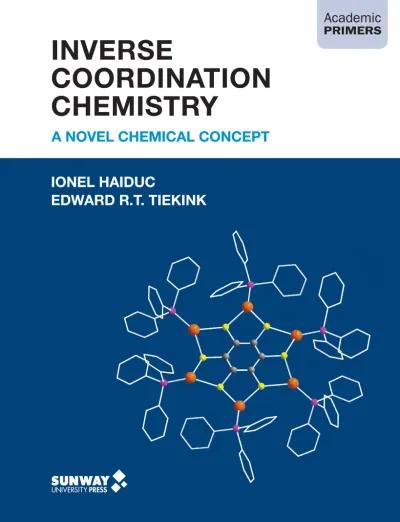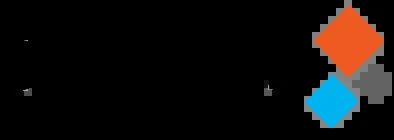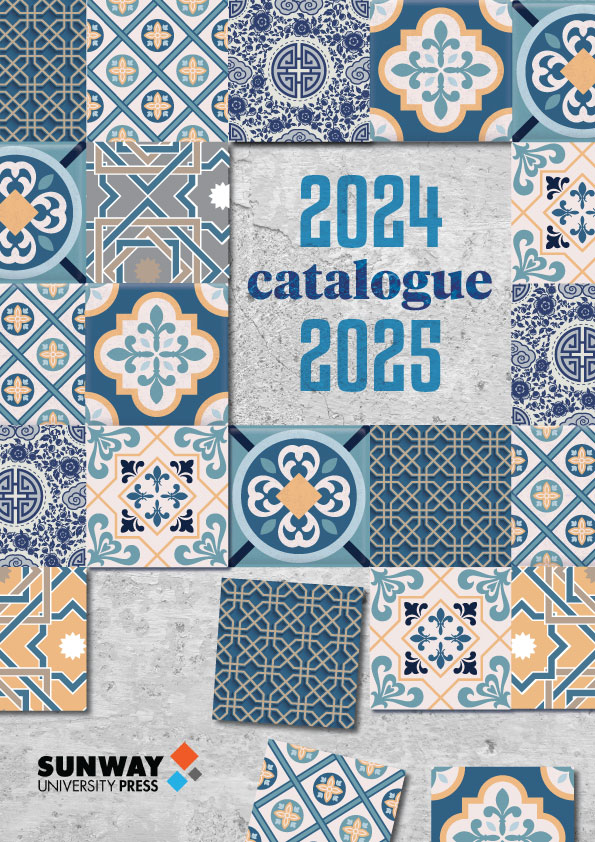
A Novel Chemical Concept
Inverse Coordination Chemistry: A Novel Chemical Concept presents the fascinating array of inverse coordination complexes, from monoatomic centres to those with organic molecules as centres, in a systematic manner with full-colour illustrative examples. This book is a timely and comprehensive introduction to this largely overlooked field of inverse coordination in inorganic chemistry.
This title is available as an e-book.
To purchase, visit your preferred e-book provider.
Inverse Coordination Chemistry: A Novel Chemical Concept features and discusses the interesting array of inverse coordination complexes, from those with monoatomic or polyatomic centres to those with organic molecules as centres. While traditional coordination complexes consist of a metal atom at the centre surrounded by inorganic ligands, inverse coordination complexes show a reversed topology: a central non-metal atom surrounded by metallic ligands.
Concisely written and with full-coloured illustrations, this book is a timely and comprehensive introduction to this exciting but largely overlooked field of inverse coordination in inorganic chemistry. This book serves as an invaluable resource for chemists, educators, and students.
Preface
About the Authors
- INTRODUCTION
1.1 Defining the concept
1.2 Knowing the history
- MONOATOMIC INVERSE COORDINATION CENTRES
2.1 Triangular complexes
2.1.1 Single-atom bridging linkers
2.1.2 Two-atom bridging linkers
2.1.3 Three-atom bridging linkers
2.2 Tetrahedral complexes
2.2.1 Single-atom bridging linkers
2.2.2 Two-atom bridging linkers
2.2.3 Three-atom bridging linkers
2.3 Planar complexes
2.3.1 Trigonal-bipyramidal and square-pyramidal complexes
2.3.2 Octahedral complexes
2.3.3 Linker-free complexes
- POLYATOMIC INVERSE COORDINATION CENTRES
3.1 Polynitrogen as the inverse coordination centre
3.1.1 Trinitrogen
3.1.2 Dinitrogen
3.2 Naked phosphorus as the inverse coordination centre
3.2.1 Nonaphosphorus and larger Pn groups
3.2.2 Octaphosphorus groups
3.2.3 Heptaphosphorus groups
3.2.4 Hexaphosphorus groups
3.2.5 Pentaphosphorus groups
3.2.6 Tetraphosphorus groups
3.2.7 Triphosphorus groups
3.2.8 Diphosphorus groups
- ORGANIC MOLECULES AS INVERSE COORDINATION CENTRES
4.1 Nitrogen heterocycles as inverse coordination centre
4.1.1 Miscellaneous
4.1.2 Bicyclic molecules
4.1.3 Six-membered heterocycles
4.2 Fused-ring systems as inverse coordination centres
4.3 Saturated six-membered rings as inverse coordination centres
4.3.1 Tricyclic species
4.3.2 Bicyclic species
4.3.3 Monocyclic species
4.4 Five-membered rings as inverse coordination centres
4.4.1 Fused five-membered rings
4.4.2 Tetrazole
4.4.3 Triazole
4.4.4 Biimidazole
4.4.5 Imidazole
4.4.6 Pyrazole
4.5 Carboxylates as inverse coordination centres
4.6 Oxocarbons as inverse coordination centres
4.7 Oxalate as an inverse coordination centre, and nitrogen and sulphur analogues
4.8 Organophosphanes as inverse coordination centres
4.9 Thiolates and sulphides as inverse coordination centres
References
Index
Ionel Haiduc is Professor Emeritus at Babes-Bolyai University in Cluj-Napoca, Romania. A distinguished chemist and prolific researcher, he has published over 340 journal articles and authored several books including The Chemistry of Inorganic Ring Systems (1970), Basic Organometallic Chemistry (1985), The Chemistry of Inorganic Homo- and Heterocycles (1987), Organometallics in Cancer Chemotherapy (1990), and Supramolecular Organometallic Chemistry (1999). He is a member of the Romanian Academy (former President from 2006 to 2014) and the Academia Europea (London), as well as an honorary or correspondent member of Göttingen Academy of Sciences and Humanities, Hungarian Academy of Sciences, Academy of Sciences of Moldova, and Montenegrin Academy of Sciences.
Edward R.T. Tiekink is Distinguished Professor and Head of the Research Centre for Crystalline Materials at Sunway University, Malaysia. He is a graduate of the University of Melbourne, Australia (D.Sc. 2006), where his passion for structural chemistry was nurtured. He has published in excess of 2,000 research papers/reviews and co-edited a number of books reflecting his interests in crystallography and metal-based drugs, including Metallotherapeutic Drugs and Metal-Based Diagnostic Agents: The Use of Metals in Medicine (2005), Frontiers in Crystal Engineering (2006), Organic Crystal Engineering—Frontiers in Crystal Engineering (2010), and Multi-Component Crystals: Synthesis, Concepts, Function (2017). He is a Fellow of the Royal Society of Chemistry and the Royal Australian Chemical Institute.
Basic Information
- 978-967-5492-18-1 (Paperback)
- 978-967-5492-32-7 (E-book)



